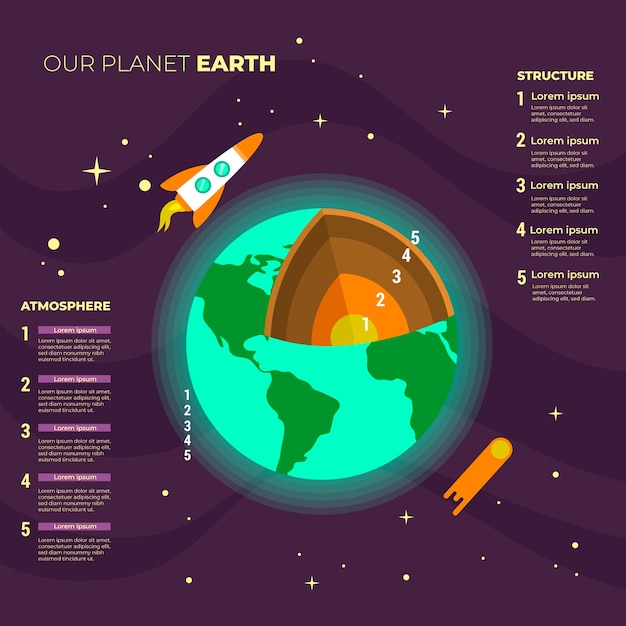Discovering Fascinating Facts About Earth

Earth is the only known planet in the universe that supports life.
The earth’s surface is covered by about 71% water.
Earth is the fifth-largest planet in our solar system.
The earth’s rotation is gradually slowing down.
The longest mountain range on earth is the Mid-Atlantic Ridge.
The earth’s atmosphere extends up to 10,000 kilometers.
Earth is the densest planet in our solar system.
The earth’s magnetic field protects us from harmful solar radiation.
Earth is the only planet with plate tectonics.
The highest point on earth is Mount Everest, with an elevation of 8,848 meters.
The earth’s deepest point is the Mariana Trench, reaching a depth of 10,994 meters.
Earth is known as the Blue Planet due to its abundant water.
The earth’s orbit around the sun is not perfectly circular, but slightly elliptical.
Earth’s magnetic north and south poles move over time.
It takes 365.25 days for earth to orbit around the sun, leading to leap years.
Earth’s largest desert is the Antarctic desert.
The earth’s atmosphere consists of 78% nitrogen and 21% oxygen.
The coldest temperature recorded on earth was -128.6 degrees Fahrenheit in Antarctica.
The earth’s rotation causes the sunrise and sunset.
Earth’s diameter is about 12,742 kilometers.
The earth’s magnetic field has flipped its polarity multiple times in history.
Discovering Fascinating Facts About Earth part 2
The earth’s moon is the fifth-largest moon in our solar system.
Earth’s gravitational force is about 6 times stronger than the moon’s.
The earth’s land surface is made up of seven continents.
Earth’s deepest underground railway is the St. Petersburg Metro in Russia.
The earth’s largest ocean is the Pacific Ocean, covering about 30% of the planet’s surface.
Earth’s atmosphere is divided into several layers, including the troposphere and stratosphere.
The earth’s rotation causes the Coriolis effect, influencing weather patterns.
The earth’s rotation means we experience day and night.
Earth’s atmosphere scatters sunlight, giving us the blue sky during the day.
The earth has experienced five mass extinctions throughout its history.
Earth’s landmasses were once joined together as a supercontinent called Pangaea.
The earth’s oceans contain around 97% of the planet’s water.
The earth’s magnetic field protects our atmosphere from being blown away by solar wind.
Earth’s highest waterfall is Angel Falls in Venezuela, measuring 979 meters.
The earth’s ozone layer protects us from harmful ultraviolet radiation.
Earth’s weather is influenced by various factors, including temperature, humidity, and air pressure.
The earth’s axial tilt of about 23.5 degrees results in the changing seasons.
Earth’s rotation causes the equator to bulge slightly, making it the widest point on the planet.
The earth’s atmosphere consists of different gases, including carbon dioxide and methane.
Earth’s continents are constantly moving due to plate tectonics.
The earth’s land surface is home to approximately 7.9 million species.
Earth’s magnetic poles are not aligned with the geographic poles.
Earth’s largest known impact crater is the Vredefort Crater in South Africa.
The earth’s population is estimated to be over 7.9 billion people.

